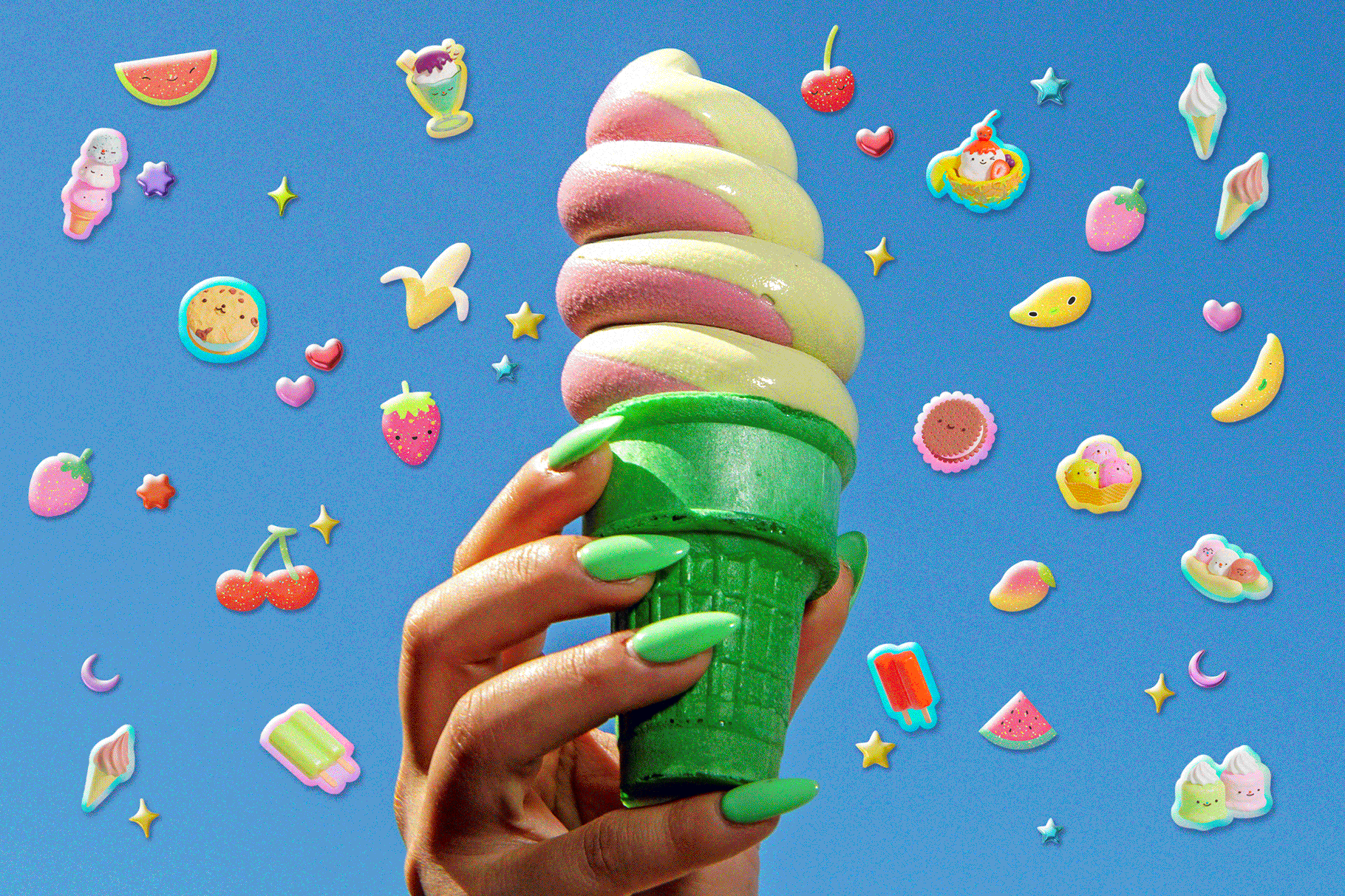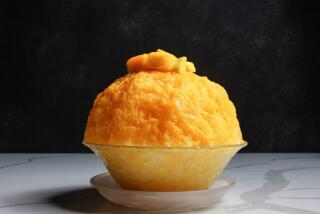Cool Ways to Capture Peak Flavors of Summer : Produce: Berries, melons and tree and vine fruits provide juicy flavorings for sorbets and ice cream.
The temperatures of July bake summer fruits to perfumed glory. But these fruits are at their best for only a fleeting moment, just time enough for them to be captured in the frozen splendor of ice creams and sorbets.
American fruits are in peak production right now. Tree fruits, technically called stone or drupe fruits, have edible flesh surrounding a single large seed. The apricot and peach originated in China, while the cherry called Europe home. Plums come from the Caucasus mountain region of northern Europe in the Soviet Union. The nectarine is actually a fuzzless variety of the peach family. All of these fruits benefit greatly from tree ripening.
Most of the berry family originated in America and Europe. Raspberries, blackberries, cloudberries, loganberries, goose and huckleberries are actually aggregates of several small fruits in which each rounded section surrounds a single seed. The blueberry and currant family are large fruits surrounding multiple tiny seeds. In each case, take care to avoid crushing the seeds to prevent bitterness.
Some of the vine fruits, such as watermelon, whose seeds are dispersed throughout the flesh--are related to squash. The remaining melons--honeydew, crenshaw, cantaloupe, musk, casaba and saticoy--are related to the cucumber family and are thought to have originated in India or Africa. Their seeds are centered in the flesh. Many of the other melons--with names such as honeyrock, cavaillon, etc.--are hybrids developed from the basic melons.
Because of a lack of starch reserves, melons do not ripen or get any sweeter after picking. For making ice creams and sorbets, select the sweetest and most perfumed melons as chilling softens their already delicate flavors.
Sorbets were thought to originate in China before being passed to the Persians and on to the Italians. All of this took place a century or two before ice cream was invented. The origin of ice cream is unclear but is believed to be found in the French court in the mid-17th Century.
Americans refined the product with the invention of the first hand-cranked ice cream machine in 1846. This machine generated smaller crystals of ice produced by the introduction of air. Our innovative ancestors continued to develop their enjoyment of ice cream with the invention of ice cream cones in 1904, Eskimo pies of chocolate-coated ice cream in 1919, and the Good Humor Bar--ice cream on a stick--in 1924.
The three basic phases of ice cream making are: (a) preparing the mix, (b) freezing and (c) hardening. The basic mix is composed of principle flavors from fruits or spices, fats from cream to provide richness, sugar to keep some of the liquids from freezing, and air which interrupts the frozen solids and liquids for that special ice cream texture.
The basic mix is heated to help dissolve the sugar and kill off bacteria. It is then chilled for quick efficient freezing and better texture.
The freezing procedure is quite simple in a self-contained refrigerated machine. Fill the container to two-thirds to allow for air intake and expansion and proceed according to manufacturer’s specifications.
If you use a traditional machine, which uses ice and salt for freezing, prepare the proper freezing brine of eight parts ice to one part salt to start. As the ice cream mix begins to freeze and become thicker, increase the salt to one part per three parts of ice, which will lower the brine temperature to approximately minus-4 degrees.
When the ice cream is thick enough to stop the mechanical action, add a couple of handfuls of salt to further lower the brine temperature. Allow the ice cream to remain in this brine to harden. You can serve the ice cream at this point or transfer it to the freezer.
Fruit sorbets are composed of fruit puree and sugar blended to a density of 15 brix on a hydrometer or 30% on a refractometer, the sweetness balanced with a little lemon or lime juice. The resulting sorbet mixture is frozen just like the ice cream procedure but using the colder brine ratio of one part salt to three parts ice for the duration of the freezing.
PEACH ICE CREAM
3 cups very ripe, peeled, pitted and chunked peaches
2 cups whipping cream, scalded
6 egg yolks
3/4 cup sugar
Dash salt
1 teaspoon vanilla
1/4 cup Southern Comfort
Combine peaches and hot cream in blender and puree until smooth.
Combine egg yolks, sugar, salt and vanilla in medium saucepan. Whisk in puree.
Stir over medium-low heat until custard thickens enough to coat back of spoon, about 10 minutes. Do not boil.
Remove from heat and strain through fine sieve into medium bowl. Add Southern Comfort. Cover and refrigerate until well-chilled.
Process custard in ice cream maker according to manufacturer’s instructions. Transfer to container. Cover and freeze overnight.
If frozen solid, soften slightly before serving. Makes 1 quart.
WATERMELON SORBET
3 pounds seeded, peeled and chunked watermelon
1/2 cup lemon juice
1 cup sugar
1/4 cup fresh wintergreen or mint leaves
Combine watermelon and lemon juice in blender and puree until smooth. Transfer to saucepan and add sugar. Bring to boil over high heat. Boil 1 minute.
Return mixture to blender. Add wintergreen leaves and puree 10 seconds. Allow to steep until mixture cools to room temperature, about 10 minutes. Strain through very fine sieve.
Process mixture in ice cream maker according to manufacturer’s instructions. Transfer to container. Cover and freeze until firm, at least overnight. Makes 1 quart.


